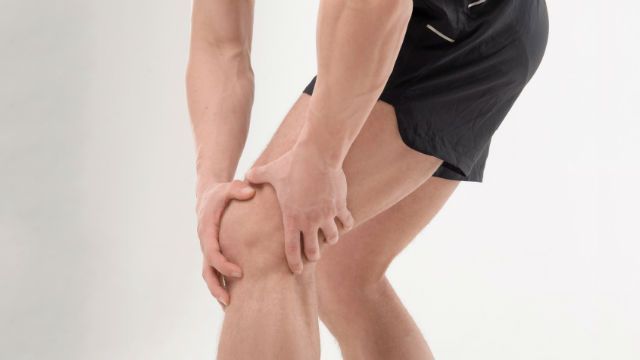
A recently published review by the American Academy of Orthopaedic Surgeons found that an estimated 100 million Americans experience chronic pain.
Chronic pain is one of the top reasons that Americans visit their physicians, and all-too-often, potent prescription medications are prescribed as treatment.
However, in light of our nation’s growing opioid abuse and dependency epidemic, more and more medical professionals are exploring natural ways to both treat and prevent chronic pain, which is defined as pain that lasts beyond a time period of healing from an injury or condition.
In their review, the authors write, “orthopaedic surgeons should be familiar with the widely available safe and effective nonnarcotic options for chronic musculoskeletal pain.”
The researchers state that most chronic pain cases in the US center around musculoskeletal joint, muscle and bone pain, including pain of the hip, shoulder and knee. Many of these are age-related cases, while others are related to injuries and illnesses. They add that other chronic pain complaints include persistent abdominal pain and headaches, as well as diabetic neuropathy pain.
Lower back pain, the researchers say, affects as many as 80 percent of Americans at some point during their lives. While the cause of chronic pain can sometimes be traced back to a specific condition, in some cases, the cause is unknown.
Some chronic pain patients are prescribed opioid painkillers to ease their pain. However, the abuse of these drugs is on the rise. According to the CDC, opioid overdoses have tripled in the last 20 years. These and other types of painkillers may also lead to a variety of unwanted side effects, including addiction.
What’s more, the authors of the new review found that non-steroidal anti-inflammatory drugs (NSAIDs), a common go-to for pain, are often found ineffective to tackle many chronic pain cases.
To help prevent chronic pain in the first place, the researchers suggest taking safety precautions in the workplace, while driving and during exercise. They also suggest avoiding risky behaviors such as smoking, and taking healthy steps to prevent diabetes and other conditions that chronic pain may accompany.
To deal with existing chronic pain, the researchers highlight the importance of finding the source of the pain, as it may be related to an undiagnosed condition. The suggestion is that doctors work with patients to come up with personalized strategies that will work for each individual.
One primary, underlying cause of chronic pain is inflammation – which is characterized by swelling of the tissues and joints of the body as the immune system responds to a real or perceived threat. When inflammation becomes chronic, many systems of the body can go awry, and chronic pain is one common outcome.
In order to deal with inflammation at its source, one important step is to be wary of the food we are putting into our bodies, as many chemicals in the processed and fast foods on the market today – as well as sugar and wheat – can greatly exasperate the problem.
Instead, choosing a diet of whole, nutritious (preferably organic) foods is key, and avoiding sugar and wheat can go far in keeping inflammation in check. As we reported in an earlier article, there are certain superfoods we can add to our diets to help subdue existing inflammation and pain.
These include ginger root, hot peppers such as cayenne pepper, turmeric, garlic and olive oil. Many of these foods can be used both internally and externally, depending on the type of pain that you are experiencing.
While these five superfoods are safe for most people in moderate amounts, be sure to check with a health professional before eating them in large quantities for chronic pain management, to make sure the food or foods that you choose are safe for your individual condition.
Another way to address chronic pain, especially chronic joint and back pain, is yoga. The practice of yoga can bring you a wealth of benefits, including greater flexibility, increased joint mobility, and a fuller range of motion. It can also aid in correcting posture and strengthening the spine, which is a common underlying cause of persistent back, shoulder and neck pain.
Because of these – and many more – benefits, it is well worth it to find a yoga class in your area. Talking to the instructor about your particular type of pain beforehand will allow them to recommend specific poses that may aid with your condition.
Physiotherapy can also greatly help with posture, as patients are often assigned exercises and stretches to correct postural habits that can be creating or worsening an injury. Talking to your primary physician about physiotherapy can get you a referral, in which case this highly beneficial treatment may be covered by your insurance.
One surprising method that has shown great promise in helping chronic pain sufferers is mindfulness meditation. A recent study performed by University of Utah researchers tested the effects of a program they developed, called Mindfulness-Oriented Recovery Enhancement (MORE), on 115 individuals with chronic pain issues. The MORE technique involved instruction on altering the individuals’ stress response, mindfulness training, and focus on the positive aspects of a given situation.
 Results of the MORE program study showed that the participants who underwent the training reported 22 percent less “pain-related impairment” than control group participants who had only received support group therapy. The researchers also found that MORE participants had 63 percent less instances of opioid misuse following the training, compared to 32 percent of the control group.
Results of the MORE program study showed that the participants who underwent the training reported 22 percent less “pain-related impairment” than control group participants who had only received support group therapy. The researchers also found that MORE participants had 63 percent less instances of opioid misuse following the training, compared to 32 percent of the control group.
While each individual is different, and the choice of how to address your specific type of chronic pain is very personal, it is highly worth it to your overall health to try a natural solution first before resorting to dangerous prescription medications.
-The Alternative Daily
Sources:
http://www.jaaos.org/content/22/2/101.abstract
http://newsroom.aaos.org/media-resources/Press-releases/managing-chronic-bone-and-joint-pain.htm

